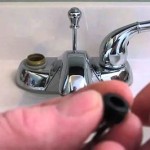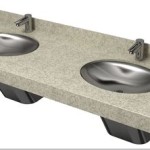How to Revamp Your Bathroom Tiles: A Comprehensive Guide
Bathroom tiles, while functional and aesthetically pleasing when new, can become dated, damaged, or simply unsuited to evolving tastes. Replacing them entirely is a significant undertaking, demanding time, skill, and a considerable budget. Fortunately, several methods exist to refresh the appearance of bathroom tiles without resorting to a full-scale renovation. This article outlines various strategies for revamping bathroom tiles, from simple cleaning techniques to more involved refinishing processes, offering practical advice for achieving a rejuvenated bathroom space.
Thorough Cleaning and Grout Restoration
The first step in improving the look of bathroom tiles is a deep clean. Over time, tiles and grout accumulate soap scum, mildew, and hard water stains, obscuring their original beauty. A dedicated cleaning regimen can often dramatically improve the overall appearance before considering more extensive solutions.
Begin by removing loose debris with a brush or vacuum cleaner. Prepare a cleaning solution appropriate for the type of tile; ceramic and porcelain tiles generally tolerate a wider range of cleaners than natural stone tiles, which may require specialized pH-neutral products to avoid damage. Common cleaning solutions include a mixture of warm water and dish soap, vinegar and water, or commercially available tile and grout cleaners. Always test the cleaning solution in an inconspicuous area first to ensure it does not discolor or damage the tile surface.
Apply the cleaning solution liberally to the tiles and grout lines. Allow it to sit for several minutes to loosen dirt and grime. For stubborn stains, consider using a paste of baking soda and water applied directly to the affected area. Scrub the tiles vigorously with a stiff-bristled brush, paying particular attention to the grout lines. For wider grout lines, a grout brush specifically designed for this purpose is recommended. Consider using a steam cleaner for a more powerful and environmentally friendly cleaning option. The high-temperature steam effectively loosens dirt and kills mold and mildew.
Once the tiles have been thoroughly scrubbed, rinse them with clean water to remove all traces of the cleaning solution. Use a clean cloth or squeegee to dry the tiles, preventing water spots and further buildup of soap scum. After cleaning, the grout may still appear discolored or stained. Grout pens, readily available at home improvement stores, offer a quick and effective way to restore the grout's original color. Choose a grout pen color that closely matches the existing grout, and carefully apply it along the grout lines, following the manufacturer's instructions. Excess grout pen residue can be wiped away with a damp cloth.
For heavily stained or damaged grout, a more intensive restoration process may be necessary. This involves removing the existing grout and replacing it with fresh grout. This is a moderately challenging task that requires patience and attention to detail. The old grout can be removed using a grout removal tool, which is either manual or electric. Exercise caution when using these tools to avoid damaging the surrounding tiles. After the old grout has been removed, thoroughly clean the grout lines to remove any remaining debris. Mix the new grout according to the manufacturer's instructions, and apply it to the grout lines using a grout float. Ensure the grout lines are completely filled, and remove any excess grout from the tile surfaces. Allow the grout to dry according to the manufacturer's instructions, and then seal it with a grout sealant to prevent future staining.
Tile Reglazing and Painting
When cleaning and grout restoration are insufficient to achieve the desired aesthetic improvement to bathroom tiles, reglazing or painting offers a more transformative solution. Both options involve altering the surface appearance of the tiles, providing an opportunity to update the color, finish, or even add decorative elements.
Tile reglazing is a professional process that involves applying a new coat of durable epoxy coating to the existing tiles. This effectively creates a new surface, concealing imperfections and providing a fresh, uniform appearance. The process typically involves cleaning the tiles thoroughly, etching the surface to promote adhesion, applying a primer, and then applying the epoxy coating. Reglazing requires specialized equipment and expertise, and it is generally best left to professionals. However, it represents a cost-effective alternative to complete tile replacement, particularly when the existing tiles are structurally sound but aesthetically outdated.
Painting bathroom tiles is a more DIY-friendly option, but it requires careful preparation and the use of the correct type of paint. Before painting, the tiles must be thoroughly cleaned and degreased to ensure proper adhesion. Use a strong cleaner, such as trisodium phosphate (TSP), to remove any soap scum, mildew, or grease. Rinse the tiles thoroughly with clean water and allow them to dry completely. Sand the tiles lightly with fine-grit sandpaper to create a slightly rough surface that will further enhance paint adhesion. Wipe away any sanding dust with a tack cloth.
Apply a primer specifically designed for use on tile surfaces. This will help the paint adhere properly and prevent it from peeling or chipping. Choose a high-quality epoxy-based paint formulated for bathrooms. This type of paint is durable, moisture-resistant, and resistant to mildew growth. Apply the paint in thin, even coats using a roller or brush. Allow each coat to dry completely before applying the next. Multiple coats may be necessary to achieve full coverage and a uniform color.
Consider using stencils or tape to create decorative patterns or designs on the painted tiles. This can add visual interest and personalize the bathroom space. Seal the painted tiles with a clear sealant to protect the paint from moisture and wear. Apply the sealant according to the manufacturer's instructions. It is important to note that painted tiles may not be as durable as reglazed or original tiles, and they may require more frequent touch-ups. Avoid using abrasive cleaners on painted tiles, as they can scratch or damage the paint. Clean the tiles with a mild detergent and a soft cloth.
Strategic Tile Overlays and Accents
Another approach to revamping bathroom tiles involves strategically adding tile overlays or accents to specific areas. This allows for a targeted update without the expense and disruption of replacing all the tiles. Tile overlays can be used to cover specific areas of outdated or damaged tiles, while tile accents can be used to add visual interest and create a focal point.
Tile overlays are thin, lightweight tiles that can be installed directly over existing tiles. These overlays are typically made from materials such as vinyl, laminate, or peel-and-stick tiles. They are available in a wide range of colors, patterns, and textures, allowing for easy customization. Tile overlays are relatively easy to install, requiring minimal tools and expertise. Clean the existing tiles thoroughly and ensure they are dry. Apply an adhesive to the back of the tile overlay and press it firmly onto the existing tile. Cut the overlays to size as needed using a utility knife or tile cutter. Tile overlays are a cost-effective and quick way to update the look of bathroom tiles, but they may not be as durable as real tiles. They are best suited for areas with low to moderate foot traffic.
Tile accents can be used to add visual interest and create a focal point in the bathroom. These accents can be in the form of decorative tile borders, individual accent tiles, or mosaic patterns. Tile accents can be installed to complement the existing tiles, creating a cohesive and stylish look. Before installing tile accents, plan the layout carefully to ensure a balanced and aesthetically pleasing design. Measure the area where the accents will be installed and mark the layout on the wall or floor. Apply thin-set mortar to the back of the accent tiles and press them firmly onto the surface. Use tile spacers to maintain consistent spacing between the tiles. Allow the mortar to dry completely before grouting the tiles.
Consider using peel-and-stick tile backsplash options for a quick and easy update. These backsplashes are available in a variety of styles and materials, and they can be easily installed without the need for mortar or grout. Simply peel off the backing and stick the backsplash to the wall. Peel-and-stick backsplashes are a great way to add a touch of style to the bathroom without a major renovation. Another option is to create a feature wall using decorative tiles. This can be done by tiling a single wall in a bold color or pattern, creating a focal point that draws the eye. Consider using textured tiles or mosaic tiles to add visual interest to the feature wall.
In conclusion, revamping bathroom tiles can be achieved through various methods, ranging from simple cleaning and grout restoration to more involved reglazing and painting techniques, and strategic tile overlays and accents. The appropriate approach depends on the condition of the existing tiles, the desired aesthetic outcome, and the available budget and skill level. Careful planning and execution are essential for achieving a successful and long-lasting result.

How To Upgrade Bathroom Tile Without Replacing

Update Your Ceramic Tile Without Replacement With Refinishing By Miracle Method We Ref Bathroom Wall Coverings Cladding Alternative To Tiles

Bathroom Remodeling A Step By Guide Budget Dumpster

60 Bathroom Tile Ideas That Can Revamp Your Space

9 Simple Ideas For Bathroom Remodel Over The Weekend

8 Ways To Update Your Vintage Tile Bathroom Building Bluebird

How To Upgrade Your Bathroom Space By Painting And Decorating Decor Express Ltd

How To Upgrade Bathroom Tile Without Replacing

10 Bathroom Tile Design Inspirations For Your Next Revamp

Top Tips To Revamp Your Bathroom On A Tight Budget
Related Posts







